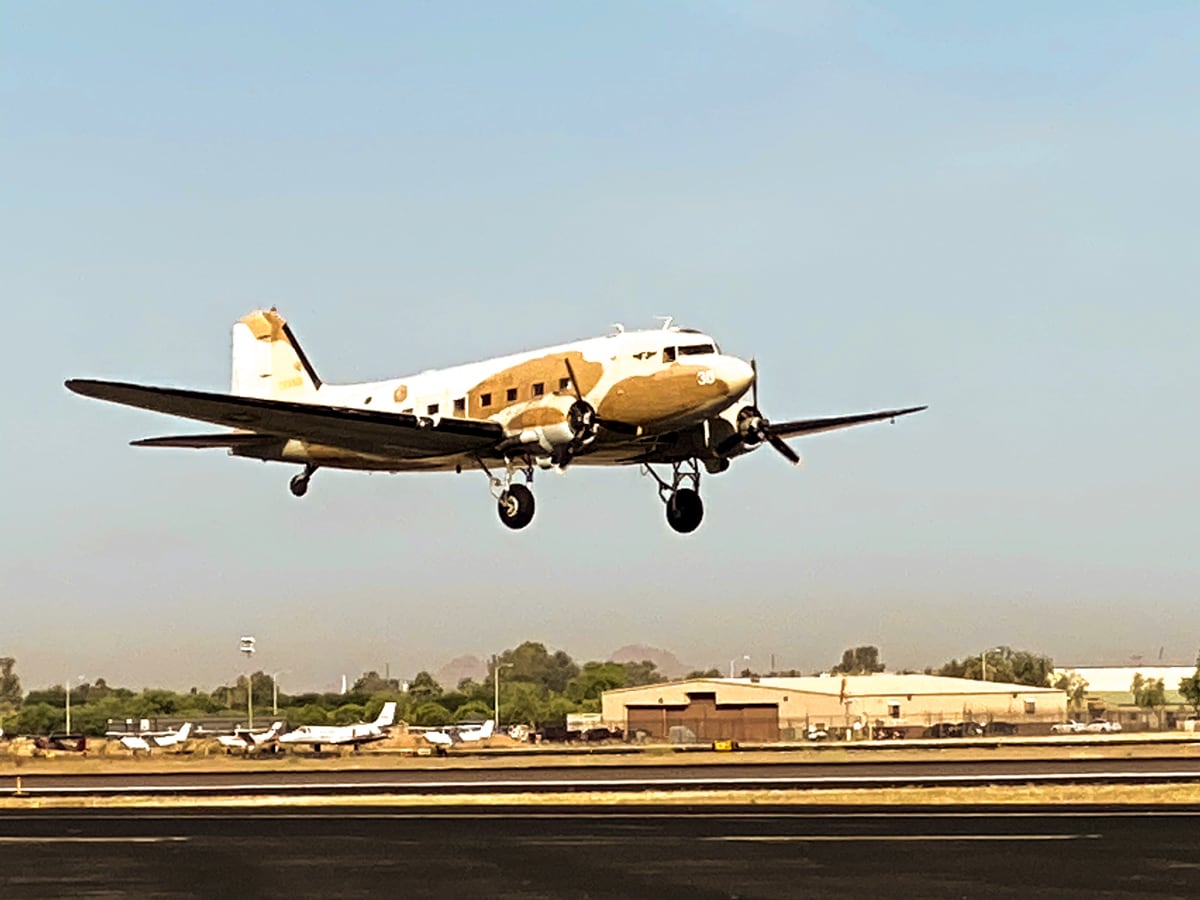Historic World War II aircraft returned to the skies over Houston and Phoenix to honor the 75th anniversary of Victory in Europe.
Multiple units of the The Commemorative Air Force, which touts itself as the largest flying museum in the world, coordinated flyovers in both cities to recognize the United States’ victory ending World War II in Europe, and also to pay tribute to those currently combating COVID-19.
“The meaning for me, it really goes back to the overall mission of the Commemorative Air Force, which is to educate, inspire and honor,” Retired Air Force Lt. Col. Pete Scholl, who participated in the Phoenix flyover, told Military Times. “And this was a way to kind of do all three.”
The Houston flyover took place on Sunday, and involved more than two dozen aircraft including the C-45 Expeditor, the B-25 Mitchell named “Devil Dog” and the BT-13A Vultee Valiant, named “Vultee Vibrator.”
Meanwhile, the Phoenix flyover took place on Friday and was comprised of a B-17 Flying Fortress, a B-25 Mitchell and a C-47 Skytrain.

In total, the CAF has more than 170 WWII aircraft in its collection, and has more than 80 units across the U.S.
Scholl, who flew F-16 fighter jets while in the Air Force, has been involved with CAF for about 17 years and flies aircraft including the B-17, the B-24, and the T-6 Texan with the museum. But on Friday, he was in the air with the B-17.
“It’s kind of a time capsule if you will, kind of a time machine,” Scholl said about the aircraft.
“It’s kind of one of those airplanes that really speaks to the era, the WWII era,” Scholl said. “That being said, it’s a really nice airplane. They designed a very very, good-flying, sturdy airplane. And obviously, it’s 75 years old and it’s still...flying very very well.”
According to Scholl, the Phoenix flyover was designed to hit as many points over the Phoenix area as possible. Specifically, the aircraft flew over the Mesa Cemetery where British fighter pilots and one American fighter pilot from WWII are buried, and the National Memorial Cemetery of Arizona where WWII veterans are buried.
Scholl said that he could see people from the aircraft gathering to witness the event, and that they had also selected locations where people could social distance appropriately.
“It really was something special,” Scholl said. “To be able to see all the people that remember this and really want to commemorate the occasion with us was really special.”
Although CAF units regularly fly the WWII aircraft, the flyover is not annual and was specifically coordinated for the 75th anniversary.
“For all of us that were doing the flyover and a lot of us that were involved in the planning, everybody’s kind of said the same thing, which is this was an amazing opportunity that we don’t get to do very often,” Scholl said. “The fact that...people were as interested as they were is really heartwarming to us.”
